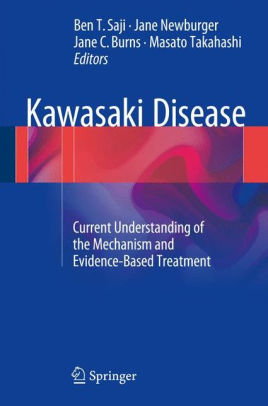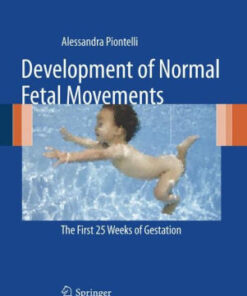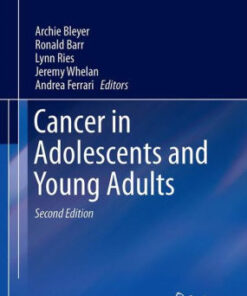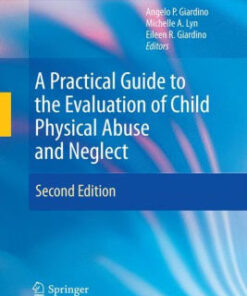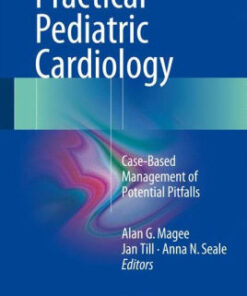(PDF) Kawasaki Disease by Ben Tsutomu Saji
$18.00
Download instantly Kawasaki Disease – Current Understanding of the Mechanism and Evidence-Based Treatment by Ben Tsutomu Saji, Jane W. Newburger, Jane C. Burns, Masato Takahashi. It is ebook in PDF format.
ISBN-10: 4431560378 ISBN-13: 9784431560371
Preview
This is the PDF eBook version for Kawasaki Disease – Current Understanding of the Mechanism and Evidence-Based Treatment by Ben Tsutomu Saji, Jane W. Newburger, Jane C. Burns, Masato Takahashi
Table of Contents
Part I: Basic Research.- 1 The History of Kawasaki Disease: A Personal Perspective.- 2 Histopathology of coronary arteritis in acute Kawasaki disease and murine systemic vasculitis induced by Candida albicans cell wall polysaccharide.- 3Histopathological characteristics aspects of organs other than the heart of noncardiac organs in Kawasaki disease.- 4 Identification of Novel Kawasaki Disease Susceptibility Genes by Genome-Wide Association Studies.- 5 Immunological Abnormalities and Use of Biomarkers and Cytokines to Predict the Severity of Kawasaki Disease.- 6 Pathophysiology of Kawasaki Disease.- 7 Update on Pathogenesis: Lessons Learned from Animal Models of Disease.- 8 The climate–KD link.- 9 Kawasaki Disease Shock Syndrome.- 10 Future directions in Kawasaki disease research.- Part II: Epidemiology.- 11 Epidemiologic Perspectives.- 12 Update on nationwide surveys and epidemiologic characteristics of Kawasaki disease in Japan.- 13 Kawasaki Disease Epidemiology in Europe.- 14 Recent topics in the epidemiology of Kawasaki disease.- Part III: Diagnosis and Examinations.- 15 Overview of Medical Treatment.- 16 Overview of the New Japanese Guideline2012 for the Medical Treatment of Acute Stage of Kawasaki Disease.- 17 Tumor Necrosis Factor-a Blockade for Treatment of Acute Kawasaki Disease.- 18 Methylprednisolone Pulse Therapy for Nonresponders to Immunoglobulin Therapy.- 19 Prednisolone.- 20 Cyclosporin A for IVIG nonresponders.- 21 Other challenging therapies.- 22 Antiplatelet and Antithrombotic Therapy for Giant Coronary Aneurysm.- 23 Characteristics of Sudden Cardiac Death Late After Acute Kawasaki Disease.- 24 Kawasaki disease diagnosis and complication rates in the United States and Japan.- 25 Mechanism of Action of Immunoglobulin: Sialylated IgG.- 26 Treatment Options for Refractory Kawasaki Disease: Alternative Treatments for Infliximab Nonresponders.- 27 Ulinastatin.- 28 Diagnosis and Management of Cardiovascular Risk Factors.- 29 Diagnosis and Characteristics of Typical and Incomplete Kawasaki Disease.- 30 Scoring systems to predict coronary artery lesions and nonresponse to initial intravenous immunoglobulin therapy.- 31 Use of magnetic resonance angiography for assessment of coronary artery lesions caused by Kawasaki disease.- 32 CT coronary and myocardial images in patients with coronary artery lesions.- 33 Long-Term Follow-up and Education Regarding Daily Life Activities, School Life, and Guidelines After Acute KD.- 34 Assessment of cardiac ischemia during acute and long-term follow-up and rheologic assessment of coronary artery lesions after Kawasaki disease.- 35 Promising biomarkers in acute Kawasaki disease and acute coronary ischemia.- 36 Coronary artery diameter Z score calculator.- 37 Evidence of endothelial damage in acute KD.- 38 Oxidative Stress in Kawasaki Disease.- Part V: Catheter Intervention and Surgery.- 39 Antiplatelet and anticoagulant therapies for Kawasaki disease: theory and practice.- 40 Guidelines for catheter intervention for coronary artery lesions in Kawasaki disease.- 41 Long-term Clinical Follow-up After Rotational Atherectomy for Coronary Arterial Stenosis in Kawasaki Disease.- 42 Long-term outcomes of pediatric coronary artery bypass grafting and downsizing for giant coronary aneurysms.- 43 Long-term outcomes of pediatric coronary artery bypass grafting and downsizing for giant coronary aneurysms.- Part VI: Follow-up Concerns.- 44 Functional and structural alterations of coronary arteries late after Kawasaki disease and the risk of acute coronary syndrome in adults.- 45 Psychosocial Effects of Kawasaki Disease and Transition to Adult Care.- 46 Kawasaki Disease: Road Map for the Future.- Appendix: Guidelines for diagnosis and management of cardiovascular sequelae in Kawasaki disease (JCS 2013).
